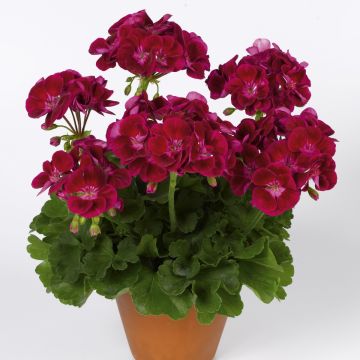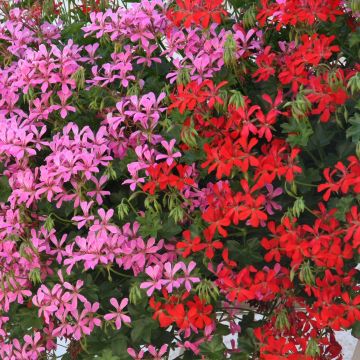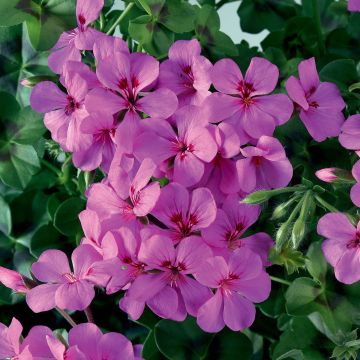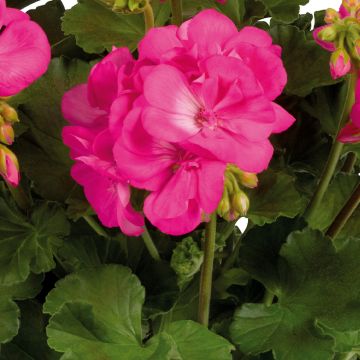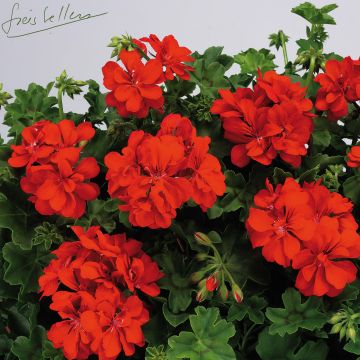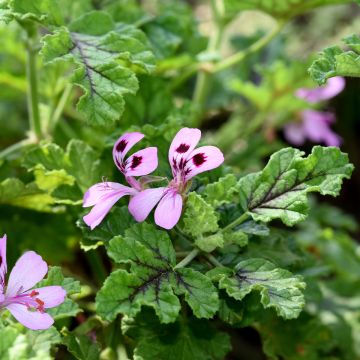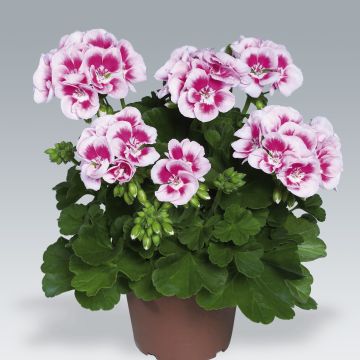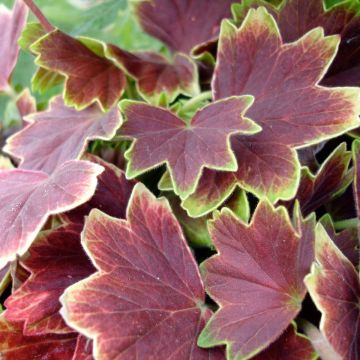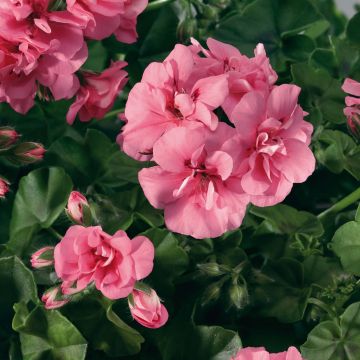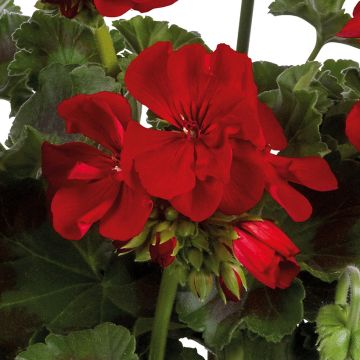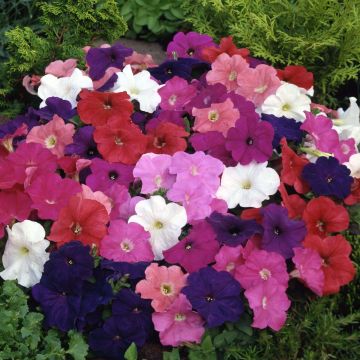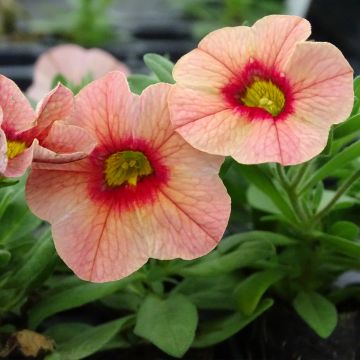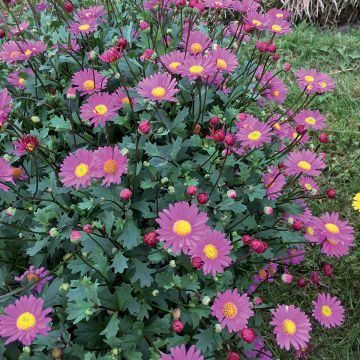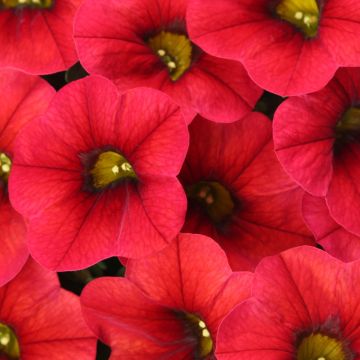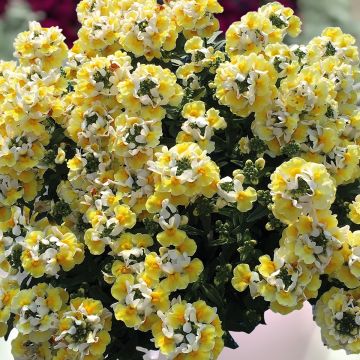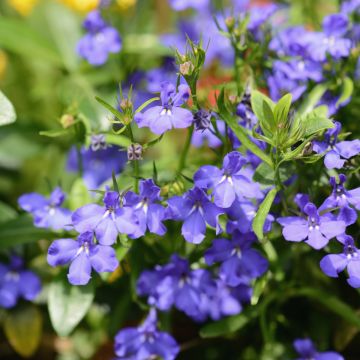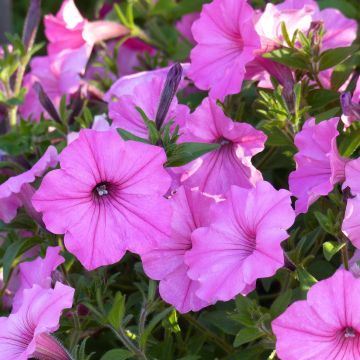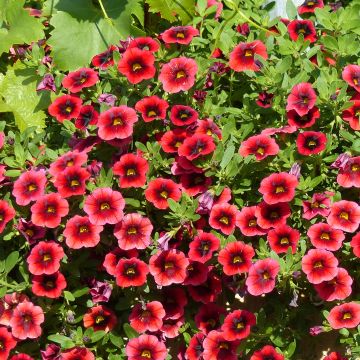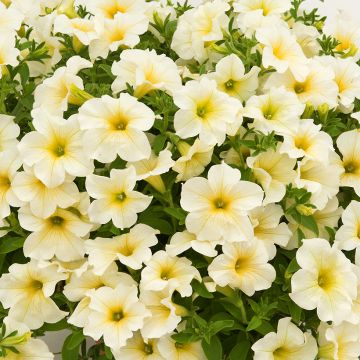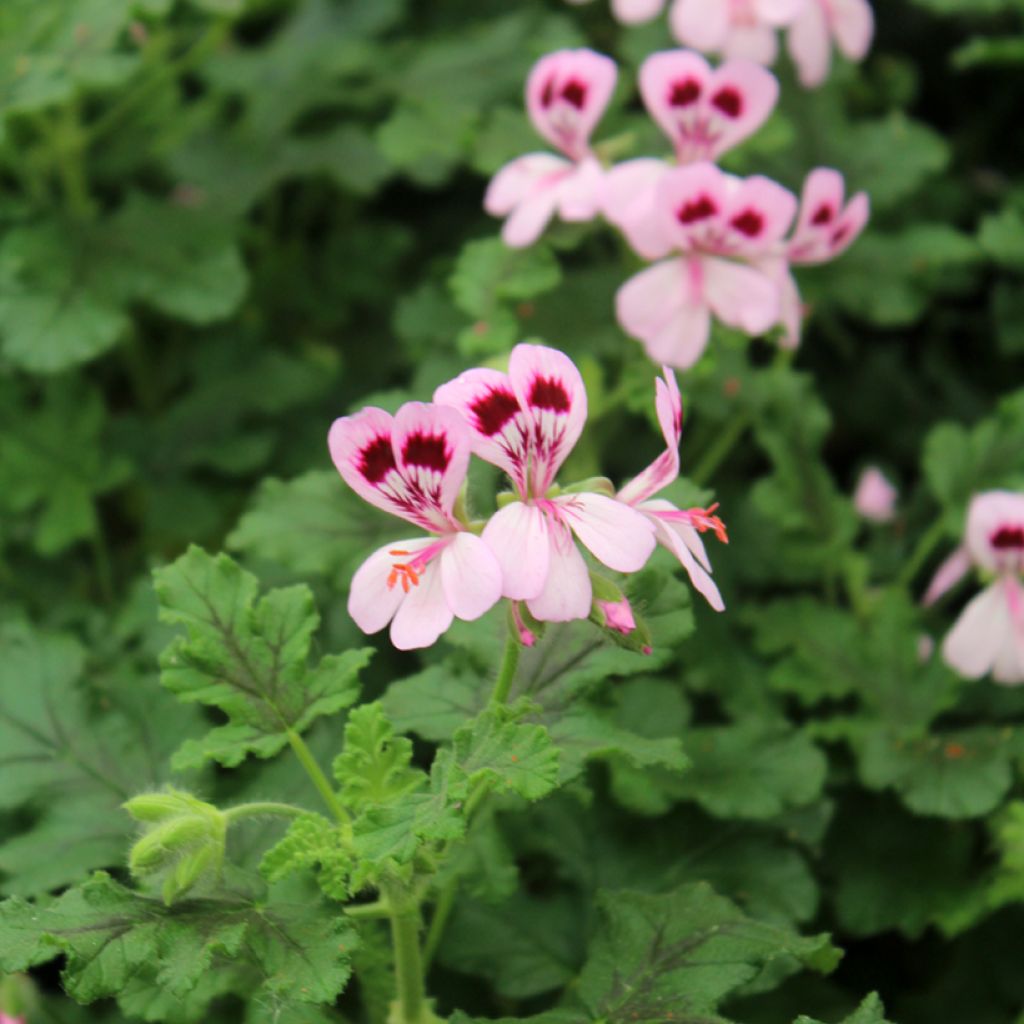

Pelargonium quercifolium
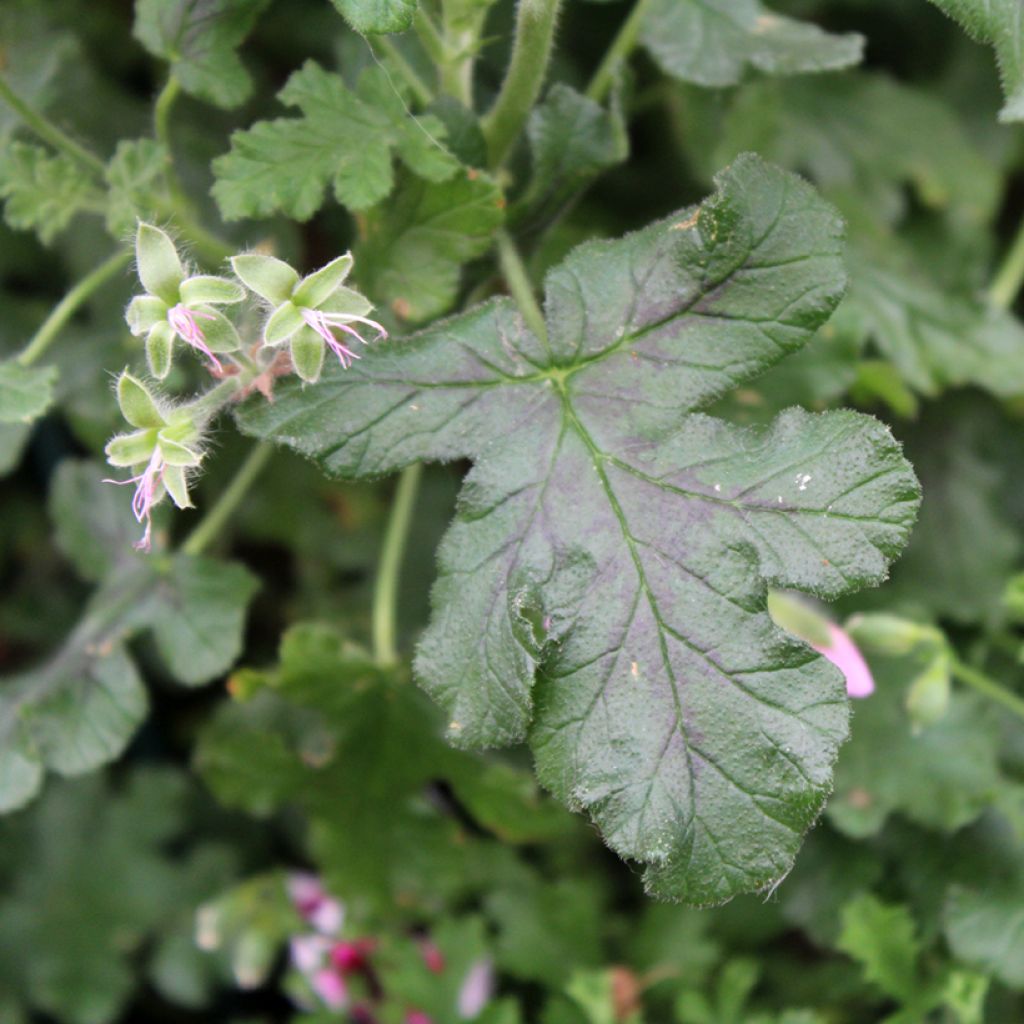

Pelargonium quercifolium
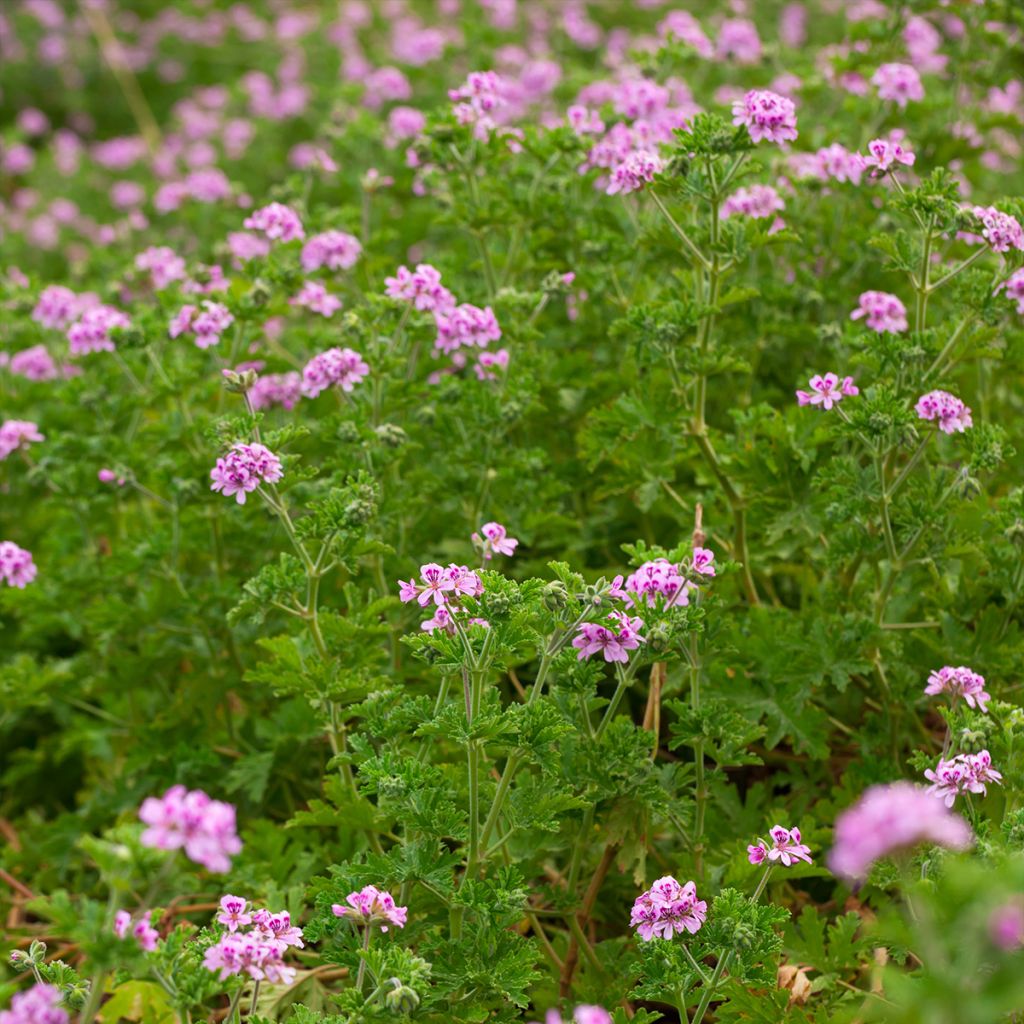

Pelargonium quercifolium
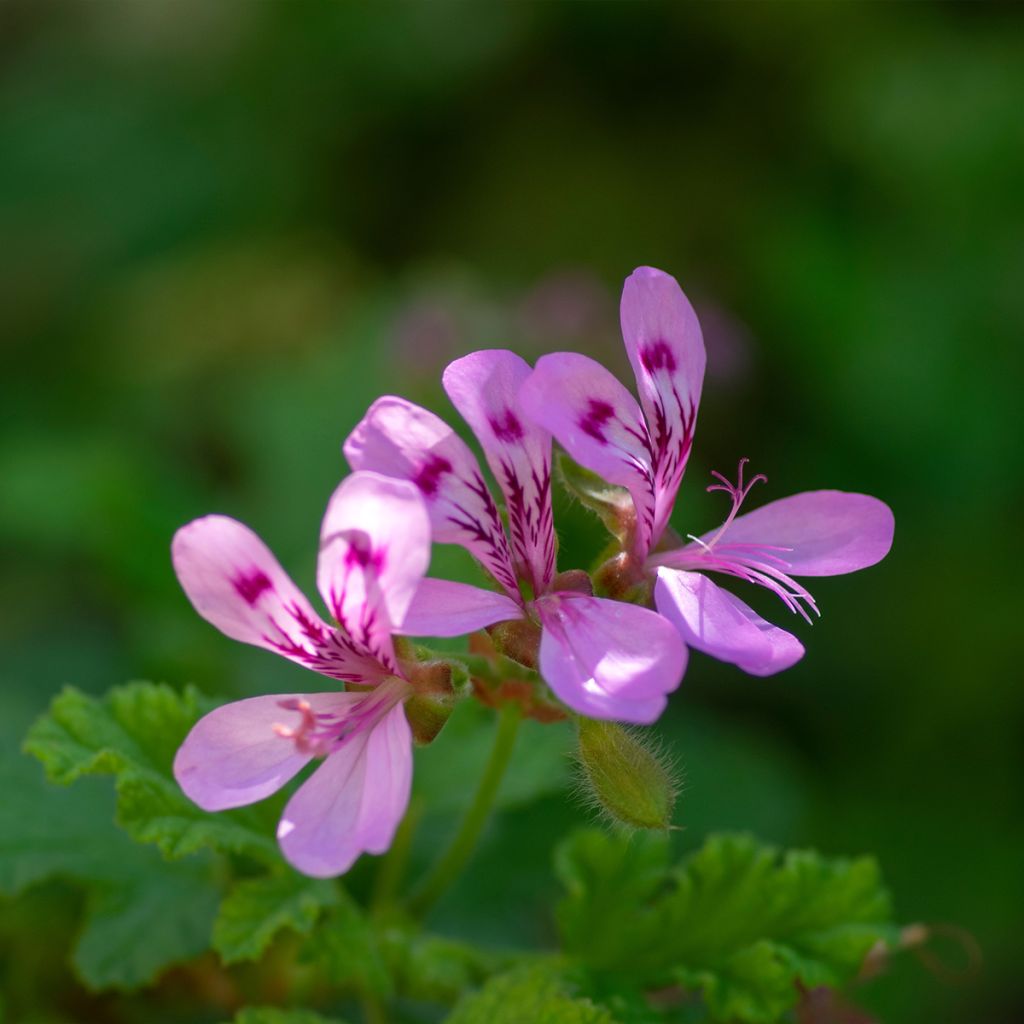

Pelargonium quercifolium
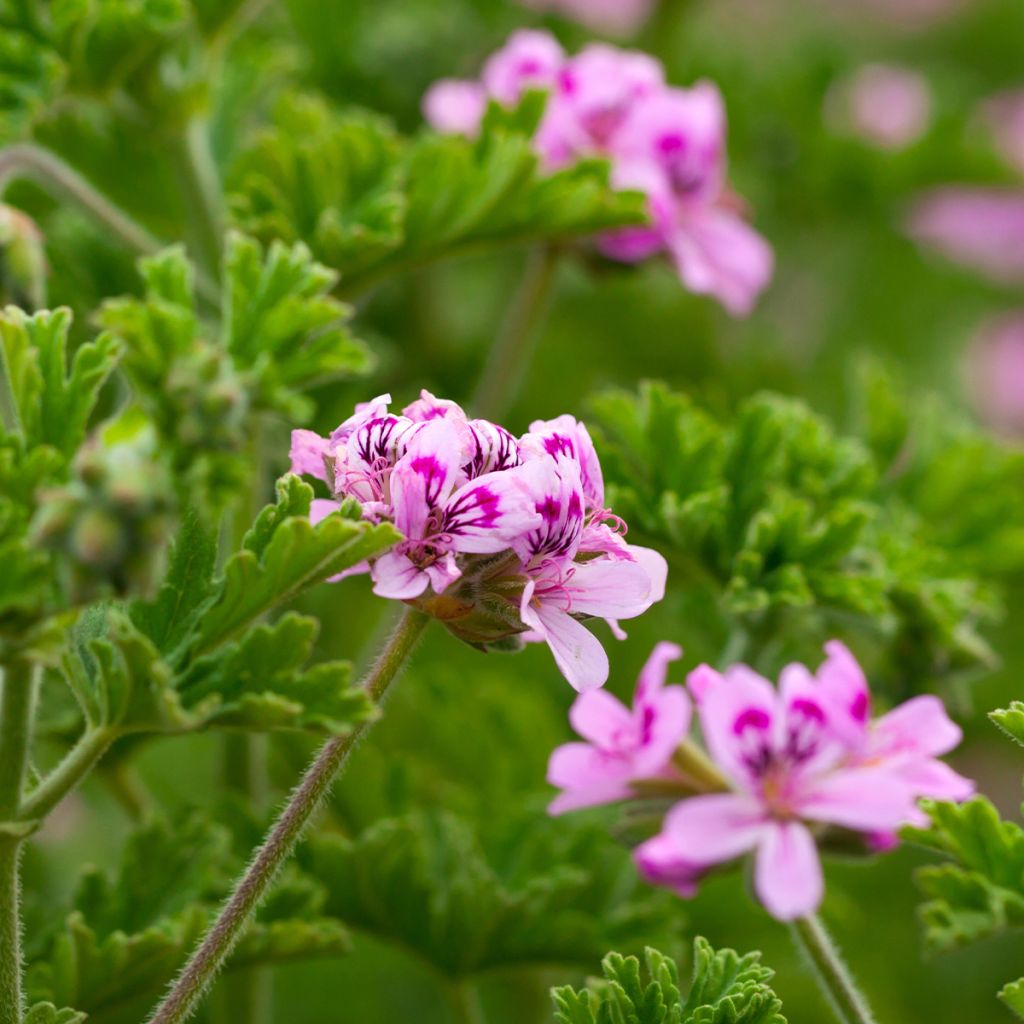

Pelargonium quercifolium
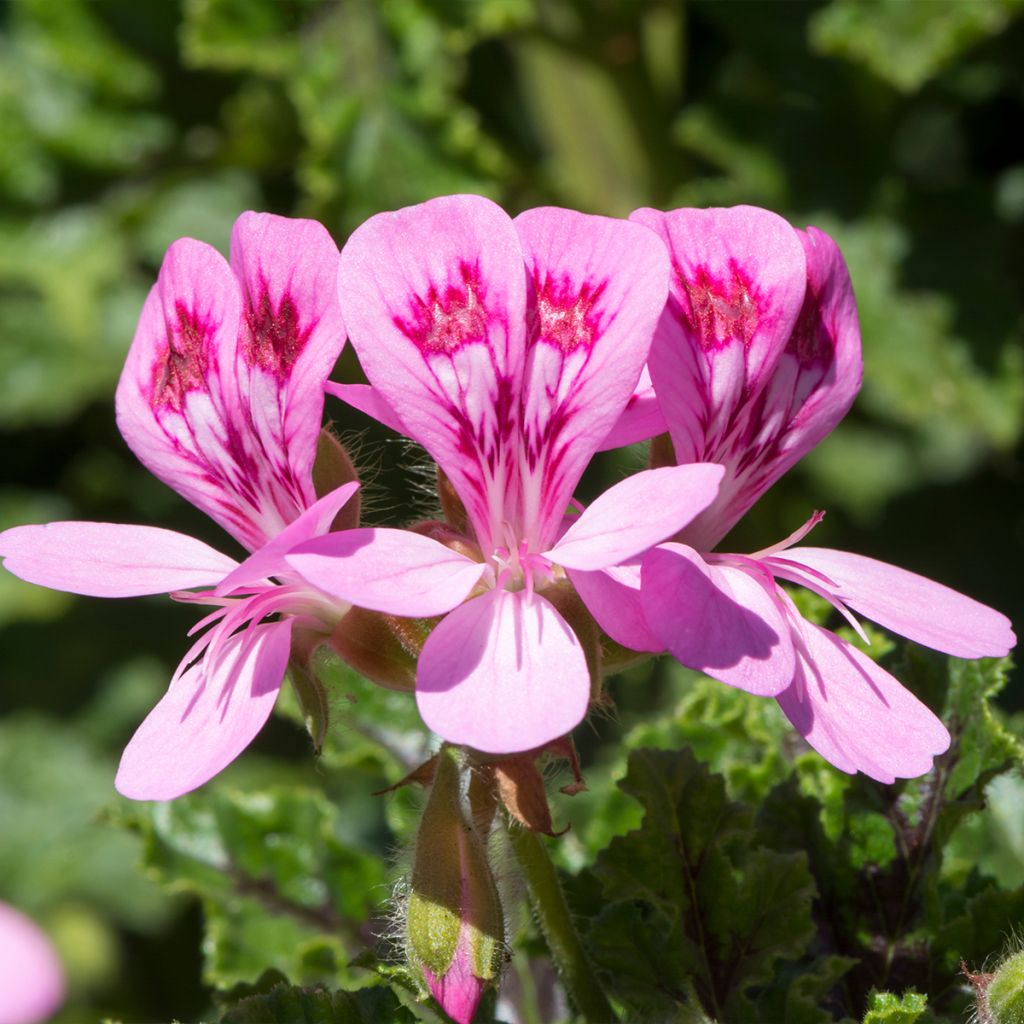

Pelargonium quercifolium


Pelargonium quercifolium
Pelargonium quercifolium
Pelargonium quercifolium
Oakleaf Geranium, Oak-leaved Geranium
This item cannot be shipped to the selected country
Delivery charge from €5.90
Delivery to Corse prohibited
More information
Schedule delivery date,
and select date in basket
This plant carries a 6 months recovery warranty
More information
We guarantee the quality of our plants for a full growing cycle, and will replace at our expense any plant that fails to recover under normal climatic and planting conditions.
From €5.90 for pickup delivery and €6.90 for home delivery
Express home delivery from €8.90.
Delivery to Corse prohibited: UE law prohibits the import of this plant from mainland France to Corse as part of the fight against Xylella fastidiosa. Please accept our sincere apologies.
More information
Does this plant fit my garden?
Set up your Plantfit profile →
Description
The Pelargonium quercifolium is a very beautiful botanical species that is particularly aromatic. It forms a beautiful bush, with ramified vegetation and an erect habit, adorned with shiny evergreen leaves, roundly cut, dark green with a black centre. The entire plant is sticky, filled with a precious essential oil with a resinous and balsamic fragrance, quite similar to that of maritime pine. It offers very pretty pinkish-purple flowers veined with garnet red throughout the summer, grouped in small umbels above the foliage. This plant is frost-sensitive and needs to be protected from freezing temperatures in winter. It will thrive in full sun, in a well-drained soil, even limestone and occasionally dry in summer.
The Pelargonium quercifolium, also known as oak-leaved geranium, is a shrub species confined in nature to the southwest of the Cape Province in South Africa, between 400 and 1000 metres (1312 and 3281 feet) above sea level, in a region where summers are hot and dry and where occasional light frosts occur. It grows on rocky or sandy, schist or limestone soils. In nature, this vigorous pelargonium forms a very ramified bush occasionally exceeding 1.50 m (5ft) in height and 70 cm (28in) in width. In our climates, it also has an erect bushy habit, reaching a height of 90 cm (35in) to 1.20 m (4ft) and a width of 60 to 80 cm (24 to 32in). Its pubescent and soft branches, covered with green hairs when young, become woody over time. They bear evergreen, highly aromatic, slightly sticky leaves, divided into 5 or 7 rigid, rounded and coarsely toothed lobes. Their colour is a fairly dark green. Pelargonium quercifolium blooms in summer. The flowers are grouped in small umbels of 5 to 10. They are quite large, sometimes measuring more than 2.5 cm (1in) in length, and are a light purplish pink, with the upper 2 petals marked with red spots and slightly larger than the 3 lower petals. The entire plant is fragrant.
The Pelargonium quercifolium is a wonderful, exotic and undemanding plant, as beautiful to look at as it is delightful to smell. So plant it, in a pot or in the ground, in a place where you can enjoy it, along a path or in a large pot, on the terrace or in the conservatory, never too far from the house, or even inside the house, in a lightly heated room in winter. We came to a halt, one day after the rain, in front of a bed of fragrant geraniums and immersed ourselves in a symphony of delicate fragrances. In mild climates, it is a plant that perfectly withstands summer drought and requires very little maintenance, making it valuable for dry gardens, by the seaside.
Report an error about the product description
Pelargonium quercifolium in pictures
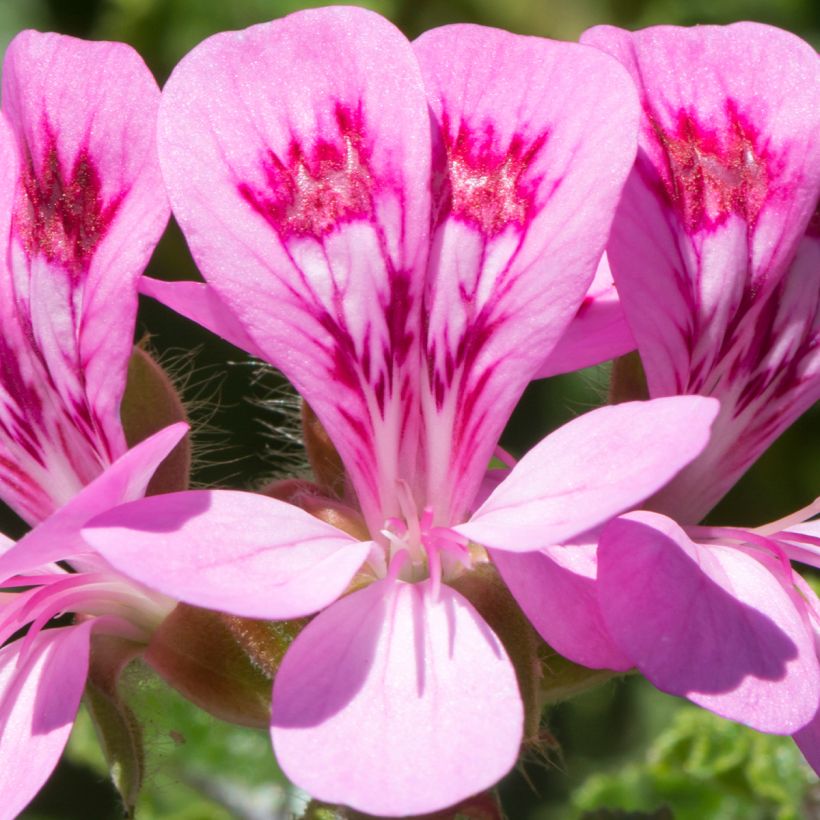

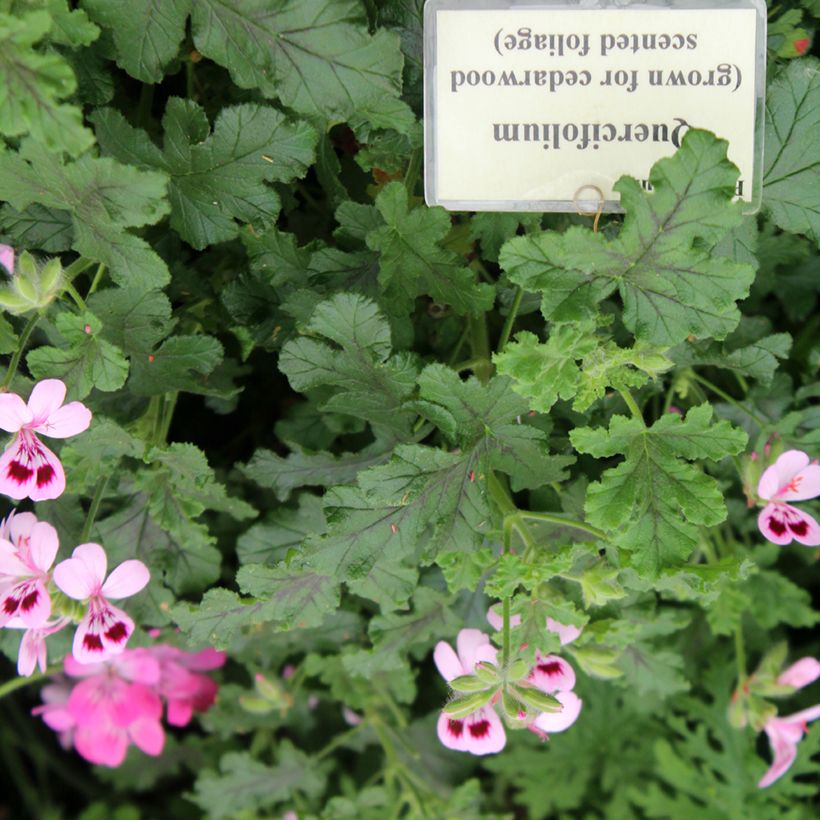

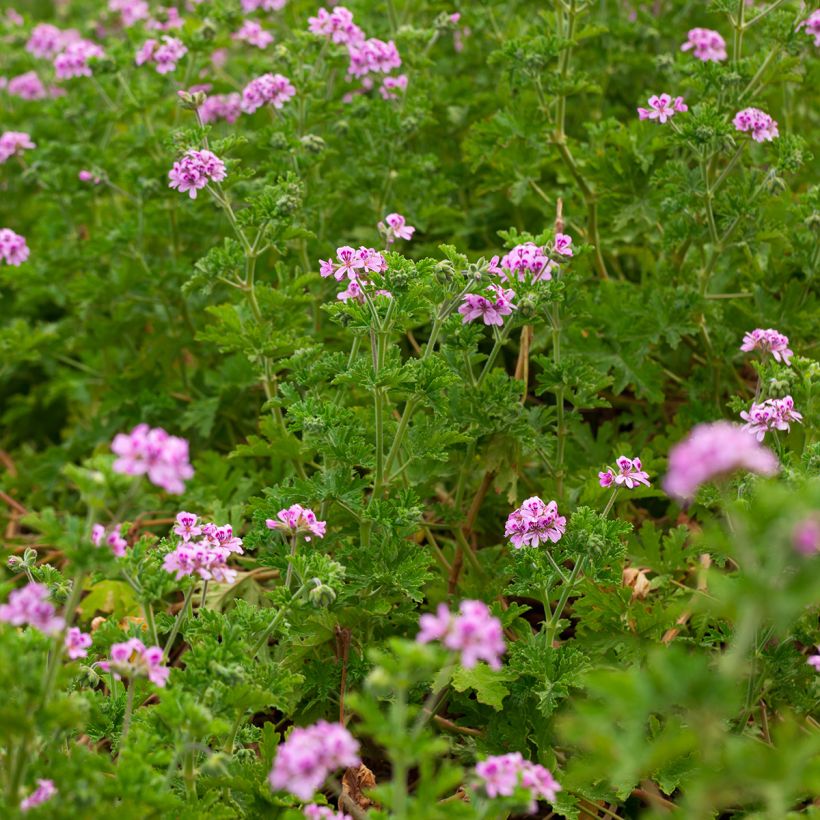

Flowering
Foliage
Plant habit
Botanical data
Pelargonium
quercifolium
Geraniaceae
Oakleaf Geranium, Oak-leaved Geranium
South Africa
Other Pelargonium - Geranium
Planting and care
Plant your geraniums in the ground after the last frosts, in a sunny position. You can also plant them in pots placed in a sheltered location, which you will take out in May. If you plant them in the ground, wait until the frosts have passed. Fragrant geraniums require well-drained soil, but not necessarily very rich, and tolerate limestone well. Water moderately, as these plants generally do not tolerate excess water. In pots, regular watering is necessary in summer. You can keep your geraniums by bringing them indoors under a veranda or a cold greenhouse in winter. They can withstand a light frost, but will not survive the winter in the garden, except by the seaside. The Pelargonium quecifolium can withstand -5 or -7°C (23 or 19.4°F) in a sheltered location and in well-drained soil.
Planting period
Intended location
Care
This item has not been reviewed yet - be the first to leave a review about it.
Plug plants - Annuals
Haven't found what you were looking for?
Hardiness is the lowest winter temperature a plant can endure without suffering serious damage or even dying. However, hardiness is affected by location (a sheltered area, such as a patio), protection (winter cover) and soil type (hardiness is improved by well-drained soil).

Photo Sharing Terms & Conditions
In order to encourage gardeners to interact and share their experiences, Promesse de fleurs offers various media enabling content to be uploaded onto its Site - in particular via the ‘Photo sharing’ module.
The User agrees to refrain from:
- Posting any content that is illegal, prejudicial, insulting, racist, inciteful to hatred, revisionist, contrary to public decency, that infringes on privacy or on the privacy rights of third parties, in particular the publicity rights of persons and goods, intellectual property rights, or the right to privacy.
- Submitting content on behalf of a third party;
- Impersonate the identity of a third party and/or publish any personal information about a third party;
In general, the User undertakes to refrain from any unethical behaviour.
All Content (in particular text, comments, files, images, photos, videos, creative works, etc.), which may be subject to property or intellectual property rights, image or other private rights, shall remain the property of the User, subject to the limited rights granted by the terms of the licence granted by Promesse de fleurs as stated below. Users are at liberty to publish or not to publish such Content on the Site, notably via the ‘Photo Sharing’ facility, and accept that this Content shall be made public and freely accessible, notably on the Internet.
Users further acknowledge, undertake to have ,and guarantee that they hold all necessary rights and permissions to publish such material on the Site, in particular with regard to the legislation in force pertaining to any privacy, property, intellectual property, image, or contractual rights, or rights of any other nature. By publishing such Content on the Site, Users acknowledge accepting full liability as publishers of the Content within the meaning of the law, and grant Promesse de fleurs, free of charge, an inclusive, worldwide licence for the said Content for the entire duration of its publication, including all reproduction, representation, up/downloading, displaying, performing, transmission, and storage rights.
Users also grant permission for their name to be linked to the Content and accept that this link may not always be made available.
By engaging in posting material, Users consent to their Content becoming automatically accessible on the Internet, in particular on other sites and/or blogs and/or web pages of the Promesse de fleurs site, including in particular social pages and the Promesse de fleurs catalogue.
Users may secure the removal of entrusted content free of charge by issuing a simple request via our contact form.
The flowering period indicated on our website applies to countries and regions located in USDA zone 8 (France, the United Kingdom, Ireland, the Netherlands, etc.)
It will vary according to where you live:
- In zones 9 to 10 (Italy, Spain, Greece, etc.), flowering will occur about 2 to 4 weeks earlier.
- In zones 6 to 7 (Germany, Poland, Slovenia, and lower mountainous regions), flowering will be delayed by 2 to 3 weeks.
- In zone 5 (Central Europe, Scandinavia), blooming will be delayed by 3 to 5 weeks.
In temperate climates, pruning of spring-flowering shrubs (forsythia, spireas, etc.) should be done just after flowering.
Pruning of summer-flowering shrubs (Indian Lilac, Perovskia, etc.) can be done in winter or spring.
In cold regions as well as with frost-sensitive plants, avoid pruning too early when severe frosts may still occur.
The planting period indicated on our website applies to countries and regions located in USDA zone 8 (France, United Kingdom, Ireland, Netherlands).
It will vary according to where you live:
- In Mediterranean zones (Marseille, Madrid, Milan, etc.), autumn and winter are the best planting periods.
- In continental zones (Strasbourg, Munich, Vienna, etc.), delay planting by 2 to 3 weeks in spring and bring it forward by 2 to 4 weeks in autumn.
- In mountainous regions (the Alps, Pyrenees, Carpathians, etc.), it is best to plant in late spring (May-June) or late summer (August-September).
The harvesting period indicated on our website applies to countries and regions in USDA zone 8 (France, England, Ireland, the Netherlands).
In colder areas (Scandinavia, Poland, Austria...) fruit and vegetable harvests are likely to be delayed by 3-4 weeks.
In warmer areas (Italy, Spain, Greece, etc.), harvesting will probably take place earlier, depending on weather conditions.
The sowing periods indicated on our website apply to countries and regions within USDA Zone 8 (France, UK, Ireland, Netherlands).
In colder areas (Scandinavia, Poland, Austria...), delay any outdoor sowing by 3-4 weeks, or sow under glass.
In warmer climes (Italy, Spain, Greece, etc.), bring outdoor sowing forward by a few weeks.

































